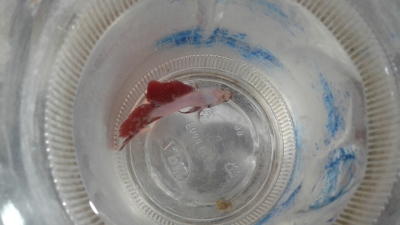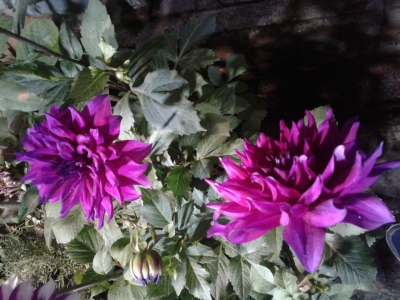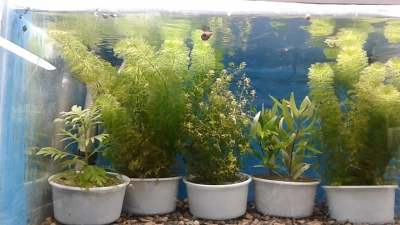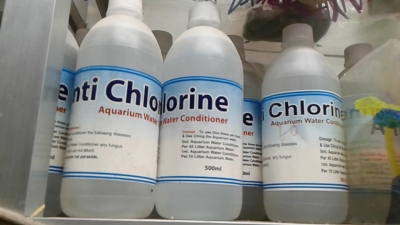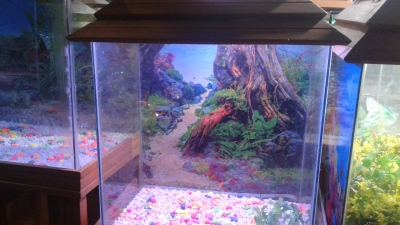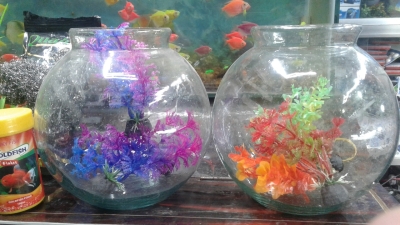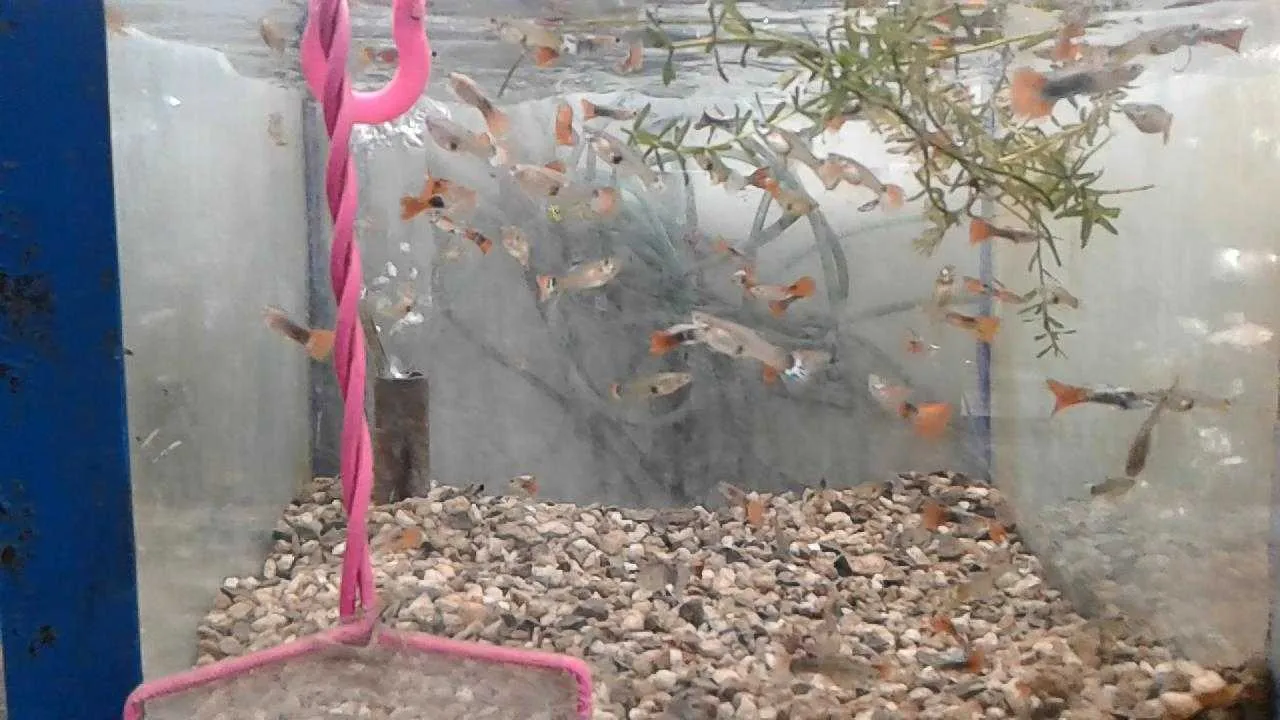
Guppies also known as Million Fish and Rainbow Fish. One of the world's most widely distributed tropical fish and freshwater aquarium fish species. Guppies have been a staple of the aquarium for generations. Originating in the tropical pools of South America and the Caribbean, these fish are now available in a variety of colors that are all captive-breeds. Guppies originated in northeastern South America, but have been introduced in many environments and are now found all over the world. They are highly adaptable and improve in a variety of ecological and ecological conditions. Male guppies, smaller than females, have ornamental tails and dorsal fins. Wild guppies usually feed on a variety of food sources, including benthic algae and aquatic insect larvae. The guppy is used as a model organism in ecology, evolution and behavioral studies. Many guppy keepers can start with just one or two fish, but being a living carrier by storing long-term sperm, you can stay in a full tank long before.
The look of Guppy
The most exciting aspect of guppy is its appearance. Both males and females may display flowing fins that define guppies, but females tend to grow significantly larger overall. They are obese and can grow twice as large as men. For this reason, telephones are not so eye-catching. These fish are playing gorgeous telphins full of colors! In most cases, the body is relatively silent. These fish have a minnow-like profile with a fine spit and inverted mouth. For the color, the sky is the limit with guppies! It is known that there are more than 300 different varieties. These fish can take a spectrum of colors and patterns.
Size and lifetime
Every year two generations of guppies occur in the wild. Guppies are well-developed and capable of independent existence at birth without further parental care. The young guppies go to school together and perform the Predator strategy. The size of the brood is highly variable, yet there are some consistent differences in the population depending on the level of prey and other factors. Male and female guppies live in the wild and in captivity for up to two years. In ideal tank environments, guppies may live longer than wild guppies because wild guppies come in contact with more predators. Adult guppies are on average about two inches long. Female guppies double the size of male guppies. Males grow to about 1 inch tall and females up to 2 inches tall. Male guppies mature in 7 weeks or less. The total lifespan of guppies in the wild varies greatly, but it is usually about 2 years. Differences in the historical characteristics of this type of guppy life are observed among different populations, indicating that different evolutionary pressures exist.
Guppy Behavior
Guppies are calm, calm fish with no aggressive or regional tendencies. They are recognized for their small, slender bodies. Different sub-species of guppies have their own unique colors, markings and tail types. Field studies have shown that guppies have colonized almost every freshwater body accessible to them in their natural range, especially in streams near the coastal shores of the South American mainland. Although not commonly found there, guppies are also tolerant of salt water and have colonized some saline environments. They are more abundant in small streams and pools than in large, deep or fast flowing rivers. They are accustomed to completely saltwater as well as being able to use saltwater aquariums like their Molly Cousins for cycling.
Guppy fish tank requirements
To provide adequate shelter for your guppies in captivity, make sure the water parameters are correct and the tank is properly cycled. Use plants and tank decorations to mimic the underwater rockery and greenery of the fish's natural environment. Living plants such as Java Moss, Flame Moss and Wisteria provide coverage for guppies and keep the water clean by accelerating the nitrogen cycle. Guppies like to play and hide in pebbles and caves, and the caves provide private space for guppies 'companions. Guppies' natural habitat varies greatly. Guppies are found in streams, ponds, small pools of water and saline ecosystems. They are versatile fish - but in captivity, the fish prefer a clean freshwater tank environment.
Guppy Disease
This freshwater species is at risk for all general health concerns. Like other captive tropical fish, they can suffer from bacterial infections, fungal problems and parasitic infections. The closed environment of the aquarium makes it easy to spread the disease.
Protozoan disease is often referred to as "guppy disease" because it is common among guppies. The disease is caused by a protozoan parasite called Tetrahymena SP. And usually occurs when the water quality is poor or the water is not hot enough.
Ich is a classic aquarium disease that affects all freshwater fish, including guppies. A guppy with ich will have white spots on its body and rub its body against the rough surface of the tank.Guppies with long, flowing fins tend to rot their fins and rot their tails. This bacterial infection is caused by stress, overcrowding and inconsistent water parameters.
Guppy food
Wild guppies eat algae debris, diatoms, invertebrates, plant fragments, mineral particles, aquatic larvae and other sources. Algal remains make up the largest proportion of wild guppy food in most cases, but diets vary depending on the specific conditions of food availability in the habitat.
Guppy Production
Guppies are unique because they are alive. They belong to the exclusive group of fish that are born free-swimming fry! Some other examples of livebears include platis and mollis. Breeding guppies are a cinch. In fact, you will probably see these fish grow without any direct intervention Instead of laying eggs across the tank, the guppies will do it inside the womb The gestation period can last anywhere from 21 to 40 days. Once the eggs are formed, the female will give birth to more than 200 babies at a time!
Different species of guppies
• Poecilia Reticulata
• Poecilia Wingei
• Micropoecilia Picta
• Veiltail
• Triangle-tail
• Fantail
• Scarftail
• Double Swordtail
• Top Swordtail
• Bottom Swordtail
There are also many more species of guppy fish.
Conclusion
With so many species breeding, it's easy to see how this list of 50+ species of guppies might look so different and expand significantly in the years to come. If you have any questions about guppy care that we didn't do. Address in this guide, do not lag behind! Send us a message and we'll try to help you as soon as possible.

